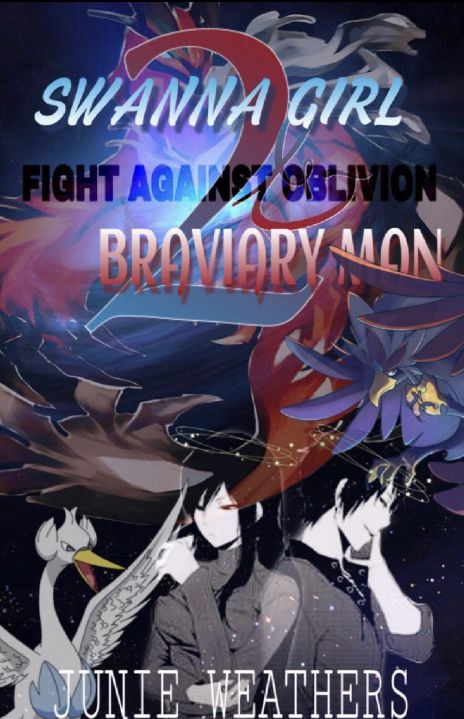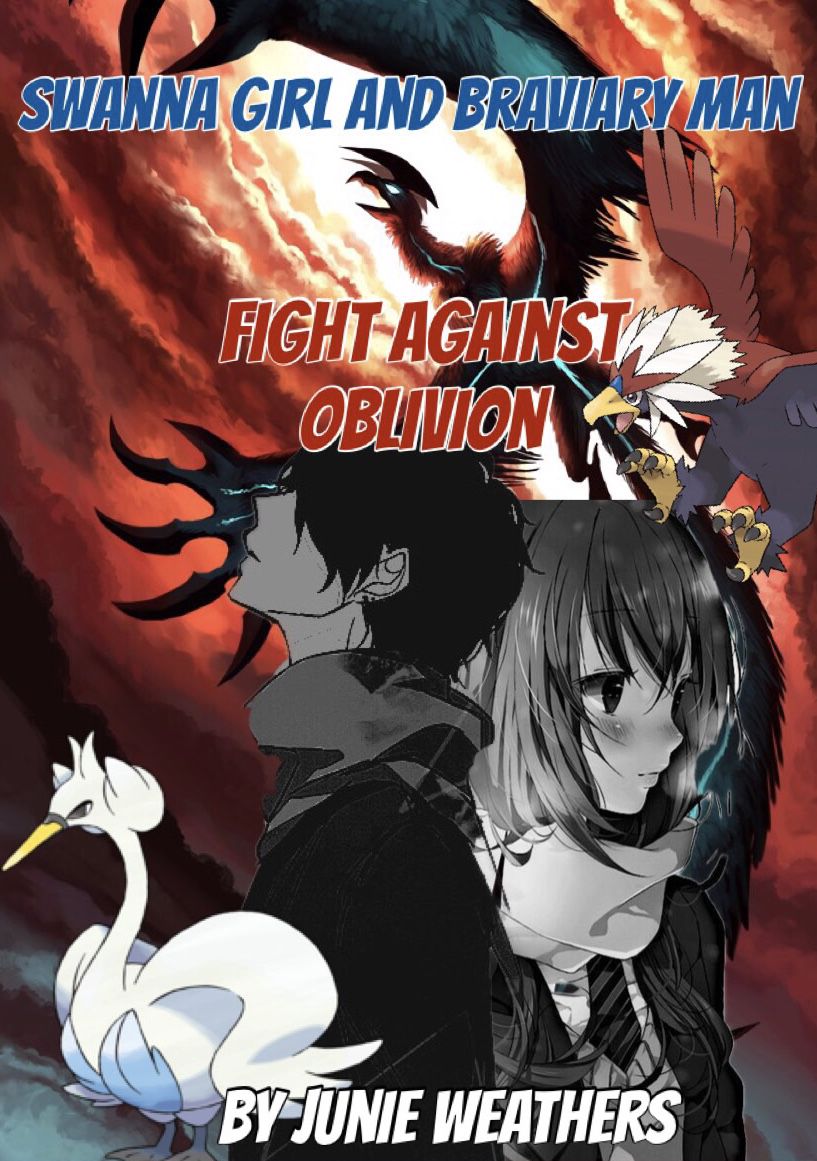Tip: Planning Sequels
Hello there. Welcome to another chapter of Junie's helpful tips! Today's topic: planning sequels. To anyone who has popped open a sequel book, then you know how hard it is sometimes continue reading a sequel. Sometimes, you may even notice the numbers are significantly lower than the original.
Here's the cold hard truth about sequels: they'll never surpass the original when it comes to the amount of readers and planning them will be a lot harder. Don't let that discourage you if you want to write one. Some readers just want one good book to read before moving on. Even with a good cliffhanger at the end of a book, they still won't look into your next book for many reasons.
But that's okay. If planned correctly, they can still be very successful. I'm not using my own books as an example here, but Red Lightening, a sequel to the very well known Pokéfic called Blue Lightening. Red Lighting became very successful due to its popularity. Sure, there's not as many votes or reads as the first one, but as a writer, you need to know that it's okay to lose readers. Besides, it's their loss for not looking into an amazing book! Both Blue Lightening and Red Lightening are phenomenal!
Once you stop worrying about that aspect, everything will become more successful. Besides, planning a sequel will turn out to be one of the harder steps. The more you open this option up, let's say, like a trilogy or something, the harder it will be to write. Why? Because as a writer, you want to give your best to your readers, and seeing that there is less feedback given, less readers to discover the book, etc etc, it can be discouraging.
Because of this, you need to think the sequel to be it's own standalone book.
Wait what?
Did I write that right? A stand alone? But that's why sequels are there, to accompany books, so why is this even a thing? Well, let me explain. Has anyone ever read the book series, Matched by Ally Condie? If not, let me tell you about this particular trilogy. It's a published book made by this author who has a thing for romance novels.
Condie's Book, Matched was made to be created into a Trilogy. It's sequel, Crossed, was what most of its readers would consider to be the worst book in the series. But it's a sequel! We know everything about what's going on in the plot. How can it be so bad?
That's the thing...there isn't a plot to it. Bit of a spoiler alert to those who haven't read it, but the main character is traveling across the country to find the boy she wasn't supposed to be matched with to reunite with him. That's it. Not much drama going on. There's countless chapters...no...the entire book was made up of filler chapters. Filler chapters aren't bad. Every good book needs a few of them to add fluff and some good warm fuzzy feelings or provoke some other emotion, but they can be annoying if overused.
How can you beat this trap? Make a plot. Make sure there's a purpose to each book made. Think of it like the Pokémon Anime. Every season is made up of the same plot: Ash and company sets off on a journey to get Ash to the Pokémon League so that he can (hopefully) become a Pokemon Master. Very generic, but it works. This is why there's subplots to each season (Hoenn Saga has Contests for May, Team Magma and Team Aqua to face, and a battle frontier at the second half of it....Kalos has Performances for Serena, Bonnie's partnership with Squishy, and even Team Flare creeping up in the background). All are based on Ash being the very best, but there's other stuff that makes it more interesting.
This is the secret formula that writers of tv shows and successful series of books use. After all, you don't want to read the same thing, but with well-written characters and an interesting plot in the first book, you don't want to completely change what's going on from the previous book. Readers who absolutely adore your first book will come for more expecting a Pokémon-journey-like tale rather than something completely different like Condie's book, Crossed.
Don't get me wrong. I enjoyed the trilogy. I read the entire thing back in high school, and enjoyed it; however, to the teachers and friends that loved the trilogy just as much as I did, well, we all agree that the sequel isn't that good. If you're reading it, keep going. Reached is an amazing book that concludes the trilogy nicely. Just have to make it through the sequel first, and the sequel is garbage.
Now that you know how to make a sequel, the last part of it is getting the word out there. There's many ways of doing this, and there isn't really a wrong way of doing it. Just as long as it warns the reader that you're writing a sequel while making it appealing to any readers that come across it.
One of the simplest ways of letting people know that it's a sequel is putting a number 2 on the cover. For instance...Swanna Girl and Braviary Man 2 could've looked something like this:

Or, it could look something like this:

Either way, both covers catches the eye (well, maybe not the second one, since there's too much going on, plus it's horribly made). But the clear difference is that the first one has the number 2 on it, signaling that it is, indeed, a sequel. As for the other one, you can guess it's not a sequel, but again, it's a guess.
When doing this, just make sure the title still makes sense though. If the title doesn't make sense to do the title name 2: rest of new title, then don't do it. There are other way of letting readers know it's a sequel, like putting it in the description.
How do you do this?
Many different ways, and the best part is, there's no wrong way of approaching this. Awesome sauce! Just as long as you tell your readers what book it is, you're set.
You could start it off with a line such as "Following the events of Swanna Girl and Braviary Man, we find our heroes have retired from their work as superheroes, or have they?" Or "Four years after Swanna Girl and Braviary Man has taken place, Sylvia and Rudi are now living normal lives...".
Don't want to start it out with the beginning? That's fine. Some will put a warning at the end saying, "Please don't read if you haven't already read the first book, Swanna Girl and Braviary Man" or "Sequel to Swanna Girl and Braviary Man."
And, well, you get the picture. It's writer preference on how to do this, and to be honest, I'm sure this isn't even half the ways you can let people know it's a sequel as well. In fact, you can even mention it in the title if you wanted to. Just as long as there is some sort of clear way that readers can find that it's a sequel, then everything is good.
So, you got a good plot going, you've figured out that a nice cover and clear way to show that the sequel is a sequel, what's next? Well, I have one more tip for you writers and readers in the secret of making a good sequel. This tip is by far the hardest one to achieve.
Why?
You still need the element of surprise in the book. This is hard. Sure, plot twists are hard when it comes to writing them, but now, your readers know your characters. They read a whole book about them!
Yet, readers returned to get to know these characters better. They know how these characters react to certain situations. It's your job as the author to keep them on their toes. This can be done in a numerous amount of ways.
•Throw in a variable that your characters never realized was a threat before.
•Reveal something about one or more your character(s) that wasn't apparent before.
•Add new characters, but be careful. Adding too many can be a headache.
•Remove some major characters. Notice how I said major, not main. Even if you remove them, still give them a cameo or two.
There are more ways that can give your readers the element of surprise. These are just four that come to my mind. Each of them are effective. Mix and match which ones will go with your story. Add as little or as many as you like to the story as you desire. You'll realize that even if your story's plot-line is similar to the first, your readers won't be expecting the outcome. This helps keep your readers on their toes.
And as a reader, that's the most fascinating part to a story.
There you have it, information on how to get your sequel out there. Don't worry if no one will read it. Remember, the best thing about writing is doing it for yourself and enjoying the writing process. Votes and comments are just a bonus, and I say this as I've seen many potentially great stories that have stopped due to the amount of votes and comments. It's sad. It just takes a while for a story to get out there sometimes.
But...
If your story can continue on as you have an amazing idea for it, then I say go for it. You'll have someone reading it. Good luck with whatever's next in your character's adventures.
Bạn đang đọc truyện trên: Truyen247.Pro